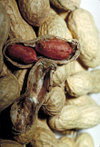Anaphylaxis
Anaphylaxis is a severe and rapid systemic allergic reaction to a trigger substance, called an allergen. Minute amounts of trigger substances may cause a life-threatening anaphylactic reaction. Anaphylaxis may occur after ingestion, inhalation, skin contact or injection of a trigger substance. The most severe type of anaphylaxis - anaphylactic shock - will usually result in death in mere minutes if untreated. more...
The word is from New Latin (derived from Greek ἀνα-/ana, meaning "up, again, back, against") + φύλαξις/phylaxis, meaning "guarding, protection"—cf. prophylaxis.)
Immediate action
Anaphylactic shock is a life-threatening medical emergency because of rapid constriction of the airway, often within minutes of onset. Calling for help immediately is important, as brain damage occurs rapidly without oxygen. Anaphylactic shock requires advanced medical care immediately; but other first aid measures include rescue breathing (part of CPR) and administration of epinephrine. Rescue breathing may be hindered by the constricted airways but can help if the victim stops breathing on their own. If the patient has previously been diagnosed with anaphylaxis, they may be carrying an EpiPen (or similar device) for immediate administration of epinephrine (adrenaline) by a layperson to help keep open the airway. Repetitive administration can cause tachycardia (rapid heartbeat) and occasionally ventricular tachycardia with heart rates up to 240 beats per minute, but is only dangerous when done in rapid succession. Nevertheless, if epinephrine prevents worsening of the airway constriction, it may still be life-saving.
Symptoms
Symptoms of anaphylaxis are related to the action of immunoglobulin E (IgE) and other anaphylatoxins, which act to release histamine and other mediator substances from mast cells (degranulation). In addition to other effects, histamine induces vasodilation and bronchospasm (constriction of the airways).
Symptoms can include the following:
- respiratory distress,
- hypotension (low blood pressure),
- fainting,
- unconsciousness,
- urticaria (hives),
- flushed appearance,
- angioedema (swelling of the face, neck and throat),
- tears (due to angioedema and stress),
- vomiting,
- itching, and
- anxiety, including a sense of impending doom
The time between ingestion of the allergen and anaphylaxis symptoms can vary for some patients depending on the amount of allergen ingested and sensitivity. Symptoms can appear immediately, or can be delayed by half an hour to several hours after ingestion. However, symptoms of anaphylaxis usually appear very quickly once they do begin.
Causes
Common causative agents in humans include:
- foods (e.g. milk, cheese, nuts, peanuts, soybeans and other legumes, fish and shellfish, wheat and eggs);
- drugs (e.g. penicillin and other cephalosporins, contrast media, ASA and other NSAIDs such as ibuprofen and diclofenac);
- latex;
- Hymenoptera stings from insects such as bees, wasps, yellow jackets, hornets, and some stinging ants; and
- exercise (see exercise-induced anaphylaxis).
Transfusion of incompatible blood products may lead to extremely similar symptoms, albeit for substantially different biochemical reasons.
Read more at Wikipedia.org



